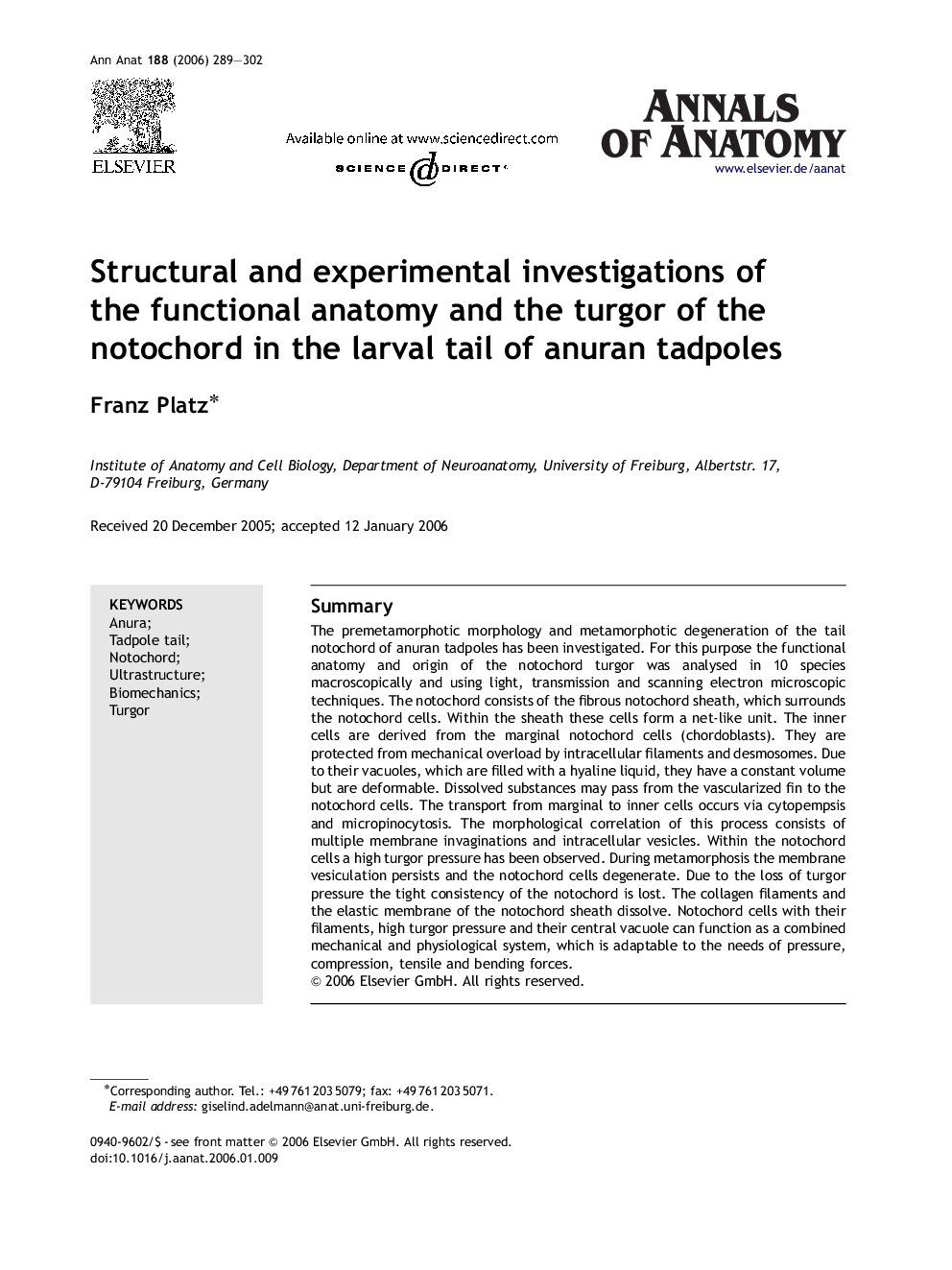| Article ID | Journal | Published Year | Pages | File Type |
|---|---|---|---|---|
| 8463119 | Annals of Anatomy - Anatomischer Anzeiger | 2006 | 14 Pages |
Abstract
The premetamorphotic morphology and metamorphotic degeneration of the tail notochord of anuran tadpoles has been investigated. For this purpose the functional anatomy and origin of the notochord turgor was analysed in 10 species macroscopically and using light, transmission and scanning electron microscopic techniques. The notochord consists of the fibrous notochord sheath, which surrounds the notochord cells. Within the sheath these cells form a net-like unit. The inner cells are derived from the marginal notochord cells (chordoblasts). They are protected from mechanical overload by intracellular filaments and desmosomes. Due to their vacuoles, which are filled with a hyaline liquid, they have a constant volume but are deformable. Dissolved substances may pass from the vascularized fin to the notochord cells. The transport from marginal to inner cells occurs via cytopempsis and micropinocytosis. The morphological correlation of this process consists of multiple membrane invaginations and intracellular vesicles. Within the notochord cells a high turgor pressure has been observed. During metamorphosis the membrane vesiculation persists and the notochord cells degenerate. Due to the loss of turgor pressure the tight consistency of the notochord is lost. The collagen filaments and the elastic membrane of the notochord sheath dissolve. Notochord cells with their filaments, high turgor pressure and their central vacuole can function as a combined mechanical and physiological system, which is adaptable to the needs of pressure, compression, tensile and bending forces.
Related Topics
Life Sciences
Biochemistry, Genetics and Molecular Biology
Cell Biology
Authors
Franz Platz,
